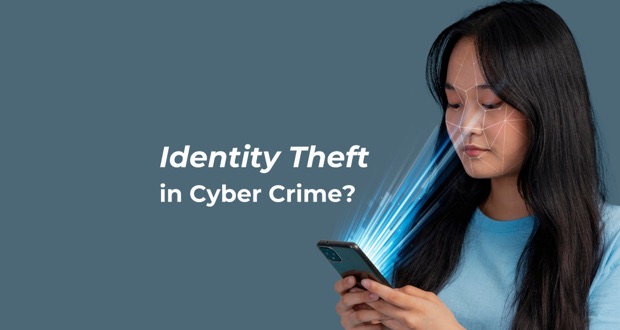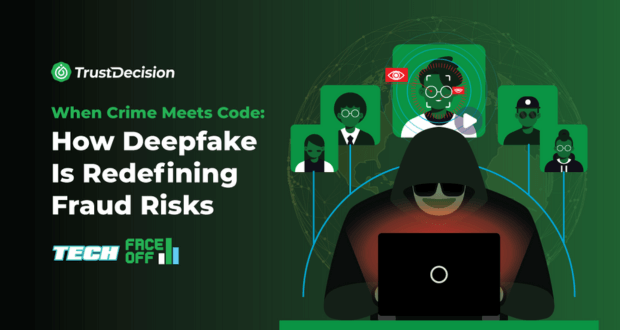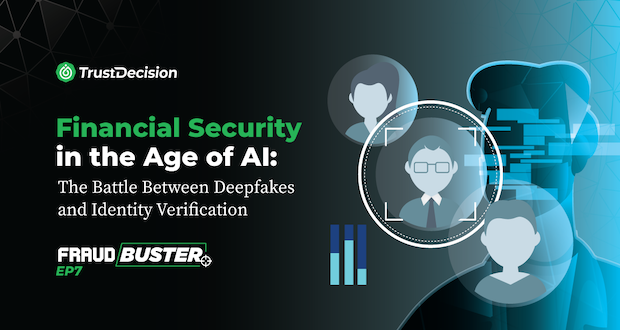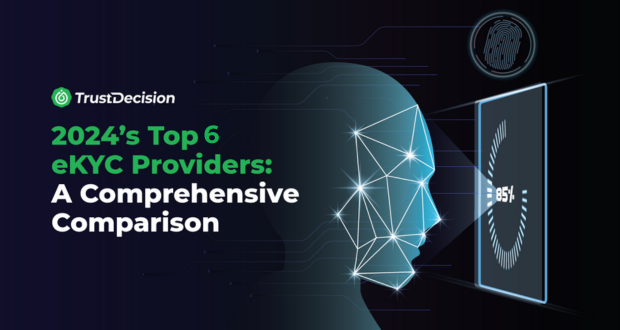Understanding Identity Theft in Cyber Crime
Cyber identity theft refers to the unauthorized acquisition and use of personal information through digital means, often with the intent to commit fraud or other malicious activities. This type of cybercrime involves exploiting vulnerabilities in online systems, social engineering tactics, and other sophisticated methods to access sensitive data such as Social Security numbers, credit card details, and login credentials. Once obtained, this information can be used to impersonate the victim, make unauthorized transactions, or even commit crimes in their name.
How Cybercrime Identity Theft Impacts Businesses
The impact of cybercrime identity theft extends far beyond the immediate financial losses:
- Financial Losses: Businesses may face direct financial losses due to fraudulent transactions and the costs associated with rectifying these issues.
- Legal Repercussions: Failure to protect customer data can result in legal actions and hefty fines under various identity theft laws and regulations.
- Reputation Damage: A data breach can severely damage a company's reputation, leading to a loss of customer trust and potential long-term revenue declines.
- Operational Disruptions: Addressing the fallout from identity theft can divert significant resources and attention away from core business operations.
Understanding the various facets of cyber identity theft is the first step in developing effective strategies to combat this pervasive threat. In the following sections, we will explore the latest trends in cybercrime identity theft and the technological defenses that can help businesses protect themselves and their customers.
The Legal Landscape: Identity Theft Law
Overview of Identity Theft Law and Regulations
As the prevalence of identity theft cyber crime continues to rise, governments and regulatory bodies worldwide have implemented stringent laws and regulations to combat this growing threat. Identity theft laws are designed to protect individuals and businesses from the malicious activities associated with cyber identity theft, providing a legal framework for prosecuting offenders and offering remedies for victims.
Key Legal Frameworks Addressing Cyber Crime Identity Theft
The rise of digital economies in Asia has unfortunately been accompanied by a surge in cybercrime, with identity theft being a major concern. To address this challenge, many Asian countries have implemented legal frameworks specifically targeting cybercrimes. Here's a look at some key examples:
1. India:
Information Technology Act, 2000 (IT Act): This comprehensive act defines cybercrimes and outlines penalties for identity theft, data breaches, and hacking.
CERT-In Directive, 2022: This directive by the Indian Computer Emergency Response Team (CERT-In) mandates reporting of cyber security incidents, aiding in faster identification and response to identity theft attempts.
2. Singapore:
Computer Misuse Act (CMA): This act criminalizes unauthorized access to computer systems, data modification, and identity theft.
Electronic Transactions Act (ETA): The ETA regulates electronic transactions and provides legal frameworks for securing online identities and transactions.
3. Philippines:
Cybercrime Prevention Act of 2012: This act defines various cybercrimes, including identity theft, and prescribes corresponding penalties.
Data Privacy Act of 2012: This act protects individuals' personal information and mandates responsible data handling practices, helping to reduce the risk of identity theft from data breaches.
Compliance Requirements for Businesses
To navigate the complex legal landscape and mitigate the risks associated with cybercrime identity theft, businesses must adhere to several compliance requirements:
Data Protection Policies: Implement comprehensive policies outlining how personal information is collected, stored, and processed. Ensure these policies are regularly updated to reflect changes in regulations and emerging threats.
Employee Training: Conduct regular training sessions to educate employees about identity theft laws, data protection best practices, and the importance of safeguarding sensitive information. Employees should be aware of the legal implications of data breaches and the steps to take in the event of a security incident.
Data Breach Response Plans: Develop and maintain a robust data breach response plan that includes procedures for identifying, containing, and mitigating data breaches. Ensure the plan complies with legal requirements for breach notifications and remediation efforts.
Regular Audits and Assessments: Conduct regular audits and assessments to evaluate the effectiveness of data protection measures and identify potential vulnerabilities. Use the findings to enhance security protocols and ensure ongoing compliance with identity theft laws.
Third-Party Risk Management: Assess third-party vendors' and partners' data protection practices to ensure they comply with relevant regulations. Establish contractual agreements that outline data protection responsibilities and liabilities.
By understanding and adhering to identity theft laws and regulations, businesses can not only protect themselves from legal repercussions but also build trust with their customers and stakeholders. In the next section, we will explore the latest trends in cyber identity theft and the technological defenses that can help businesses stay ahead of cybercriminals.
Latest Trends in Cyber Identity Theft
Emerging Tactics in Identity Theft Cybercrime
As technology evolves, so do the tactics employed by cybercriminals to perpetrate identity theft. Understanding these emerging tactics is crucial for businesses to develop effective defenses. Some of the latest trends in identity theft cybercrime include:
Phishing and Spear Phishing: Cybercriminals use deceptive emails, messages, or websites to trick individuals into revealing personal information. Spear phishing targets specific individuals or organizations, making the attacks more convincing and harder to detect.
Ransomware Attacks: Ransomware not only encrypts a victim's data but can also steal sensitive information. Cybercriminals then threaten to release the stolen data unless a ransom is paid, adding another layer of extortion to the attack.
Synthetic Identity Fraud: This involves creating a new identity by combining real and fake information. Cybercriminals use this synthetic identity to open accounts, apply for credit, and commit fraud, making it difficult to trace and detect.
Credential Stuffing: Cybercriminals use automated tools to test stolen username and password combinations on multiple websites. Given the common practice of password reuse, this tactic can lead to unauthorized access to various accounts.
Deepfake Technology: The use of AI-generated deepfake videos and audio to impersonate individuals is a growing concern. Cybercriminals can use deepfakes to bypass identity verification processes or manipulate individuals into divulging sensitive information.
The Role of Social Engineering in Cyber Identity Theft
Social engineering remains a powerful tool in the arsenal of cybercriminals. By manipulating human psychology, attackers can bypass technological defenses and access sensitive information. Key social engineering tactics include:
Pretexting: Cybercriminals create a fabricated scenario to trick individuals into divulging personal information. For example, an attacker might pose as a bank representative and request verification details under the guise of a security check.
Baiting: Attackers lure victims with the promise of something enticing, such as free software or a prize, to trick them into providing personal information or downloading malware.
Quid Pro Quo: Cybercriminals offer a service or benefit in exchange for information. For instance, an attacker might pose as IT support and offer to fix a non-existent issue in exchange for login credentials.
Tailgating: This involves physically following someone into a restricted area to gain unauthorized access. While not purely digital, tailgating can facilitate cyber identity theft by providing access to physical systems and data.
Understanding these emerging tactics and the role of social engineering is essential for businesses to develop comprehensive defenses against cyber identity theft. In the next section, we will explore the technological defenses that can help businesses protect themselves and their customers from these sophisticated threats.
Technological Defenses Against Identity Theft
Technological advancements are building a strong defense against the ever-evolving threat of identity theft. Multi-factor authentication adds an extra layer of security beyond passwords, while encryption scrambles data to make it useless in the wrong hands. Artificial intelligence and machine learning are constantly analyzing vast amounts of data to identify suspicious patterns and predict potential cyberattacks before they occur. These advanced cybersecurity measures work together to create a robust shield, making it increasingly difficult for criminals to steal personal information and commit fraud.
Advanced Cybersecurity Measures to Combat Cyber Crime Identity Theft
In the face of increasingly sophisticated cybercrime identity theft tactics, businesses must adopt advanced cybersecurity measures to protect sensitive information and prevent unauthorized access. Key measures include:
Intrusion Detection and Prevention Systems (IDPS): These systems monitor network traffic for suspicious activities and potential threats. By identifying and responding to anomalies in real-time, IDPS can prevent unauthorized access and mitigate the risk of identity theft.
Endpoint Security Solutions: Protecting endpoints such as laptops, smartphones, and tablets is crucial, as these devices are often targeted by cybercriminals. Endpoint security solutions include antivirus software, firewalls, and mobile device management (MDM) systems to safeguard against malware and unauthorized access.
Data Loss Prevention (DLP): DLP solutions monitor and control the flow of sensitive data within an organization. DLP helps prevent data breaches and identity theft by identifying and blocking unauthorized data transfers.
Behavioral Analytics: Analyzing user behavior can help detect unusual activities that may indicate identity theft. To identify potential threats, behavioral analytics tools monitor patterns such as login times, IP addresses, and transaction behaviors.
Role of AI and Machine Learning in Detecting Identity Theft Cyber Crime
Artificial intelligence (AI) and machine learning (ML) have become indispensable tools in the fight against cyber identity theft. These technologies offer several advantages in detecting and mitigating identity theft cyber crime:
Anomaly Detection: AI and ML algorithms can analyze vast amounts of data to identify deviations from normal behavior. These systems can detect potential identity theft incidents in real-time by recognizing patterns and anomalies.
Fraud Detection: Machine learning models can be trained to identify fraudulent activities by analyzing historical data and recognizing patterns associated with identity theft. These models continuously improve over time, becoming more effective at detecting new and evolving threats.
Automated Threat Response: AI-powered systems can automate threat detection and response processes, reducing the time it takes to identify and mitigate identity theft incidents. Automated responses can include blocking suspicious transactions, flagging accounts for review, and alerting security teams.
Importance of Multi-Factor Authentication and Encryption
Implementing multi-factor authentication (MFA) and encryption is essential for enhancing security and protecting against cybercrime identity theft:
Multi-Factor Authentication (MFA): MFA adds an extra layer of security by requiring users to provide multiple verification forms before accessing accounts or systems. Common MFA methods include something the user knows (password), something the user has (security token), and something the user is (biometric verification). MFA significantly reduces the risk of identity theft by making it more difficult for cybercriminals to gain unauthorized access.
Encryption: Encrypting sensitive data ensures that even if cybercriminals gain access to the data, they cannot read or use it without the decryption key. Encryption should be applied to data at rest (stored data) and in transit (data transmitted over networks). Strong encryption algorithms and key management practices are essential for maintaining data security.
By leveraging advanced cybersecurity measures, AI and machine learning, and robust authentication and encryption practices, businesses can significantly enhance their defenses against cyber identity theft. In the next section, we will introduce TrustDecision's Identity Verification solution, which offers cutting-edge technology to help businesses mitigate the risks associated with identity theft cybercrime.
TrustDecision's Identity Verification
In the battle against cybercrime identity theft, having a reliable and advanced identity verification solution is paramount. TrustDecision's Identity Verification offers a comprehensive approach to safeguarding businesses and their customers from the ever-evolving threats of cyber identity theft. Here’s how TrustDecision stands out:
Real-Time Verification
One of the most critical aspects of preventing cybercrime identity theft is the ability to verify user identities instantaneously. TrustDecision's Identity Verification solution excels in this area by providing real-time verification processes that ensure only legitimate users can access sensitive systems and data. This instantaneous verification helps prevent unauthorized access and reduces the risk of identity theft, providing businesses with peace of mind and enhanced security.
Advanced Fraud Detection
TrustDecision leverages the power of AI and machine learning to offer advanced fraud detection capabilities. By analyzing vast amounts of data and identifying patterns associated with fraudulent activities, TrustDecision's solution can detect and mitigate identity theft cybercrime effectively. The AI-driven approach continuously learns and adapts to new threats, ensuring businesses stay ahead of cybercriminals. Key features of the advanced fraud detection include:
- Behavioral Analysis: Monitoring user behavior to identify anomalies indicating fraudulent activities.
- Pattern Recognition: Detecting suspicious patterns in transactions and user interactions.
- Real-Time Alerts: Providing immediate notifications to security teams when potential fraud is detected.
Seamless Integration
A robust defense against cyber identity theft requires solutions that can easily integrate with existing systems. TrustDecision's Identity Verification is designed with seamless integration in mind, allowing businesses to incorporate the solution into their current infrastructure without significant disruptions. This ease of integration ensures that businesses can quickly enhance their security measures and protect against identity theft cybercrime. Key integration features include:
- API Compatibility: TrustDecision's solution offers APIs that facilitate smooth integration with various platforms and applications.
- Scalability: The solution is scalable, making it suitable for businesses of all sizes and industries.
- User-Friendly Interface: An intuitive interface that simplifies the implementation and management of identity verification processes.
By adopting TrustDecision's Identity Verification, businesses can significantly bolster their defenses against cyber identity theft. The combination of real-time verification, advanced fraud detection, and seamless integration provides a comprehensive and effective solution to mitigate the risks associated with identity theft cybercrime.
Conclusion
Understanding what is identity theft in cyber crime is crucial for businesses aiming to protect their assets, reputation, and customer trust. As cybercriminals continue to develop sophisticated tactics, staying informed about the latest trends and technological defenses is essential.
Businesses are encouraged to adopt advanced technological defenses such as real-time verification, AI-driven fraud detection, and robust multi-factor authentication to mitigate the risks associated with identity theft cybercrime. Solutions like TrustDecision's Identity Verification can play a pivotal role in enhancing security and preventing unauthorized access.
By staying proactive and continuously updating their cybersecurity measures, businesses can stay ahead of cyber crime identity theft trends and ensure a secure environment for their operations and customers.









.jpeg)




